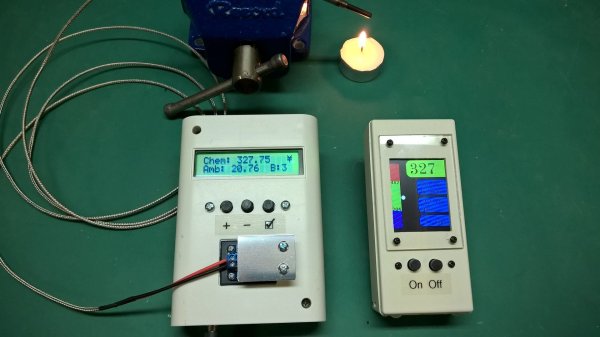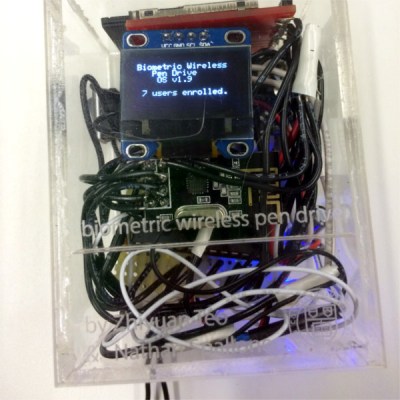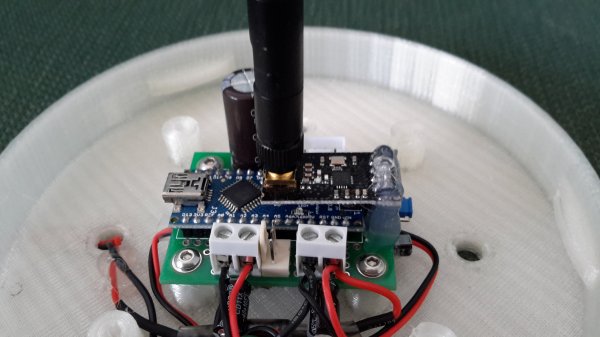[Michel] has a wood stove in his basement for extra heat in the winter. While this is a nice secondary heat source, he has creosote buildup in the chimney to worry about. [Michel] knows that by carefully monitoring the temperature of the gases in the chimney, he can hit the sweet spot where his fire burns hot enough to keep the creosote under control and cool enough that it doesn’t burn down the house. To that end, he built a wireless wood stove monitor.
The first version he built involved an annoying 20 foot run between the basement and living room. Also, the thermocouple was mounted on the surface and made poor contact with the chimney. Wood Stove Monitor 2.0 uses a probe thermometer on an Exhaust Gas Temperature (EGT) thermocouple to measure the temperatures. The intel is fed to a thermocouple amplifier to provide a cold-compensation reference. This is shielded so that radiant heat from the stove doesn’t compromise the readings. An nRF24L01+ in the basement monitoring station communicates with another module sitting in the living room display so [Michel] can easily find out what’s going on downstairs. When it’s all said and done, this monitor will be part of a bigger project to monitor power all over the house.
Interested in using a wood stove to help heat your house? Why not build your own?




 Their solution can be used by up to 20 different people who each get a slice of an SD card in the storage unit There are two physical pieces, a base station and the wireless storage unit itself. The base station connects to the host PC over USB and contains an Arduino for serial pass-through and an nRF24L01+ module for communicating with the storage side. The storage drive’s components are crammed inside a clear plastic box. This not only looks cool, it negates the need for cutting out ports to mount the fingerprint sensor and the OLED. The sensor reads the user’s credentials through the box, and the authentication status is displayed on an OLED. Files are transferred to and from the SD card over a second nRF24L01+ through the requisite PIC32.
Their solution can be used by up to 20 different people who each get a slice of an SD card in the storage unit There are two physical pieces, a base station and the wireless storage unit itself. The base station connects to the host PC over USB and contains an Arduino for serial pass-through and an nRF24L01+ module for communicating with the storage side. The storage drive’s components are crammed inside a clear plastic box. This not only looks cool, it negates the need for cutting out ports to mount the fingerprint sensor and the OLED. The sensor reads the user’s credentials through the box, and the authentication status is displayed on an OLED. Files are transferred to and from the SD card over a second nRF24L01+ through the requisite PIC32.












